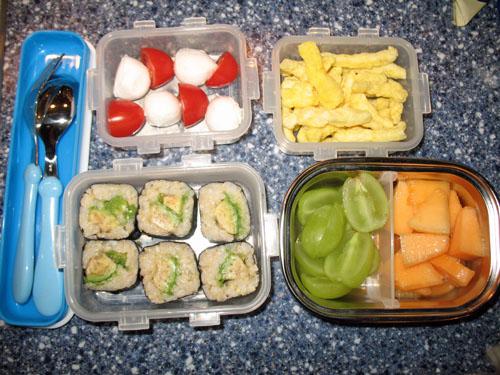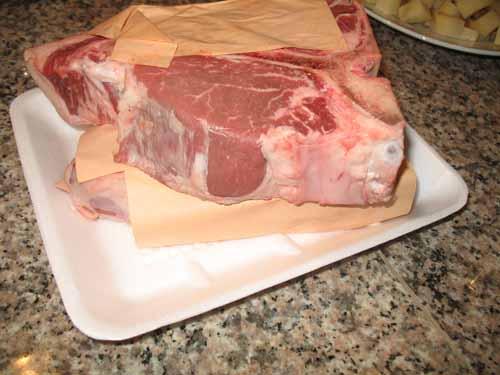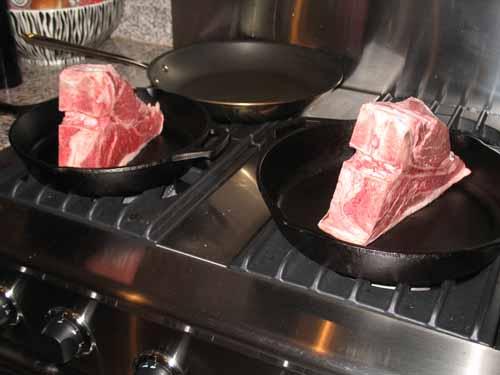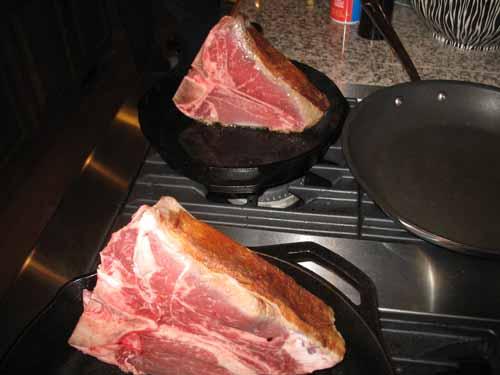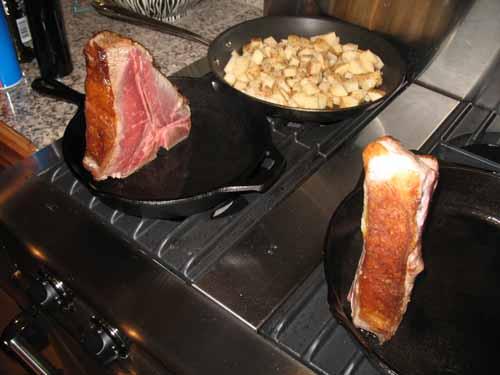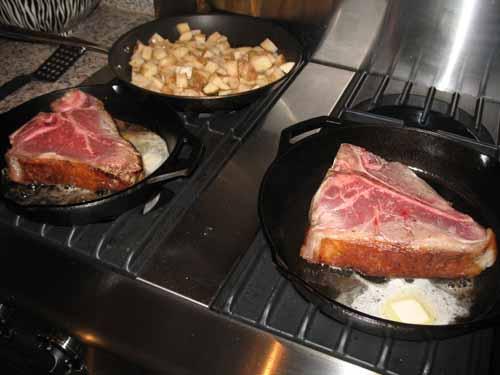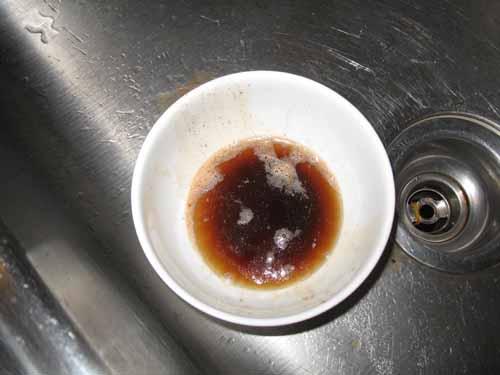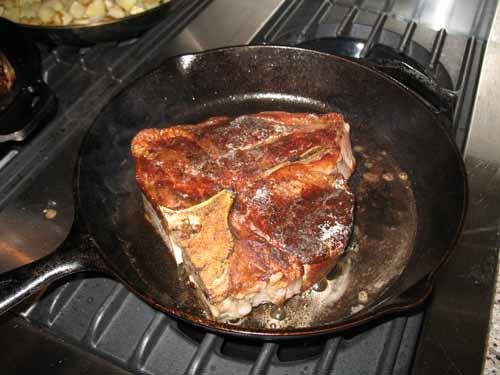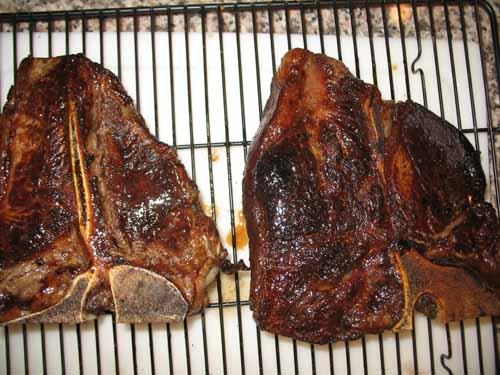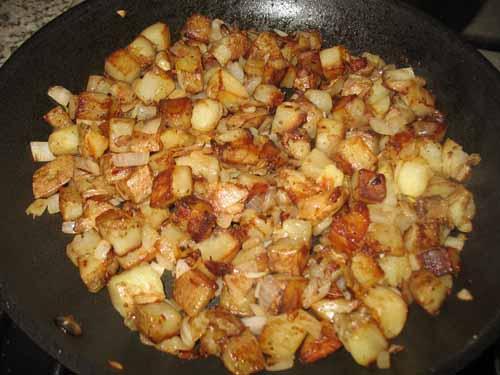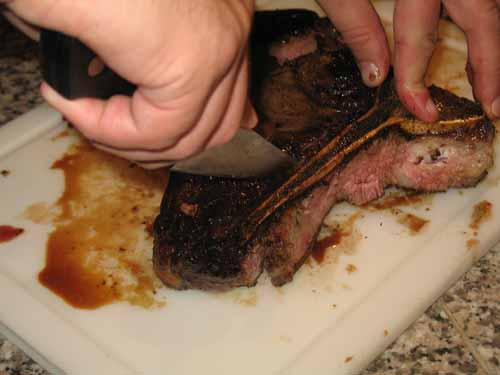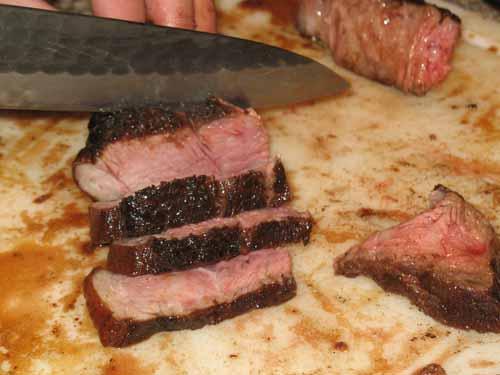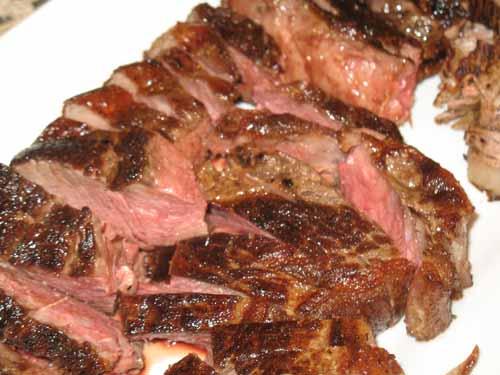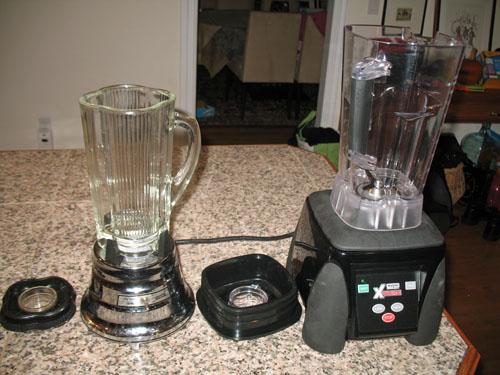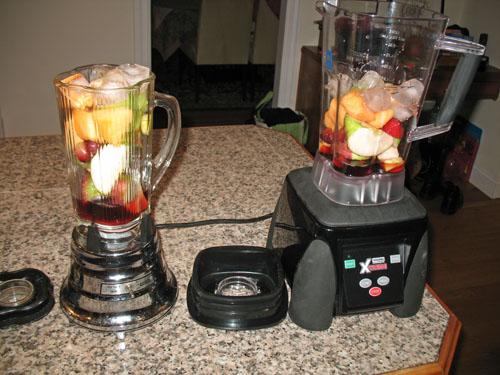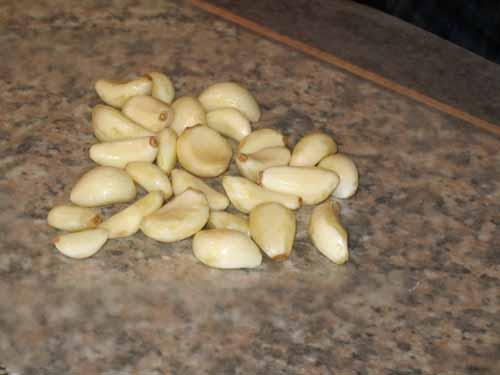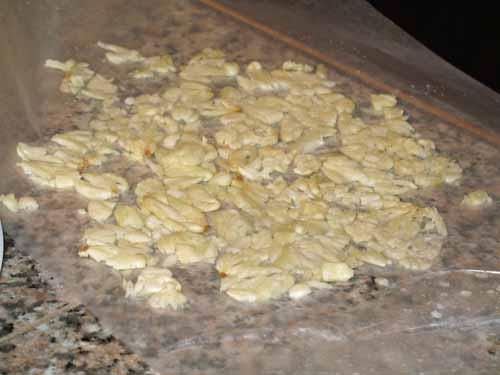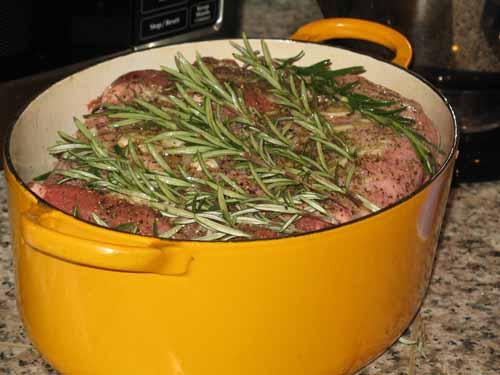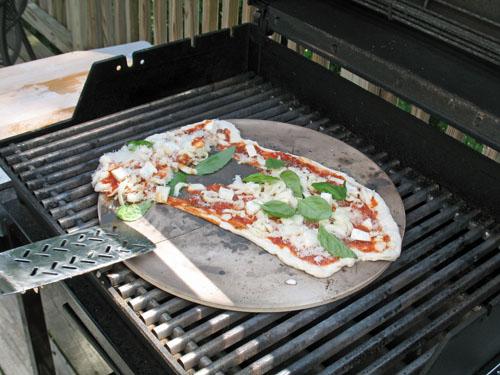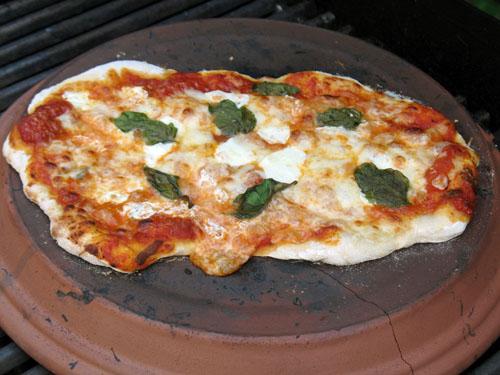-
Posts
28,458 -
Joined
-
Last visited
Content Type
Profiles
Forums
Store
Help Articles
Everything posted by Fat Guy
-
Today: brown-rice avocado maki, mozzarella-tomato, grapes, cantaloupe, and a crispy puffed-corn snack called Tings. No lunch tomorrow on account of an ongoing-school visit. I had hoped by now to have an expanded inventory of containers and some strategies for non-refrigerated lunches. I'm already bored with the routine, so I assume it's only a matter of time before PJ gets bored too. But I haven't found the time or energy to take the next steps. Soon.
-
My review copy arrived today in an imposing box from Workman/Artisan. It contained a book, a press release and a fried-chicken kit: My first move whenever I receive a chef cookbook is to look who wrote it. The co-author is listed on the inside cover (the actual cover only names Keller) as Dave Cruz, but he turns out to be the chef at Ad Hoc, who is as likely to be the author as any other chef. Listed below that are three names: Susie Heller, Michael Ruhlman and Amy Vogler. These are all writers/producers/testers who have worked on past Keller books, either French Laundry, Bouchon, Under Pressure or more than one of the above, all published by Artisan, which leads me to expect that this book will be a high-quality product. (Incidentally, jvalentino, Susie Heller produced two Chiarello books, Casual Cooking and Napa Stories.) I guess now I can read the book.
-

Repurposing Food & Kitchen Stuff You Usually Throw Away
Fat Guy replied to a topic in Kitchen Consumer
Now that I'm seeing other people's answers, I'm realizing that there are countless things around the house that have been repurposed from food stuff. Like the large plastic bear that held animal crackers and is now the vessel we fill up with water to wash our son's hair in the bathtub. I'm going to need to take a more thorough inventory and report back. Not to mention, in the Third World, people build houses out of all this stuff. -
I can't say this with scientific certainty but I think the low-and-slow Ducasse method may have a tenderizing effect.
-

Repurposing Food & Kitchen Stuff You Usually Throw Away
Fat Guy replied to a topic in Kitchen Consumer
Since the question covers "food & kitchen stuff" I've got to give credit to Asian-food takeout containers. Our cabinets are full of them. We became so enamored of a certain rectangular plastic container one Vietnamese restaurant used that, when we stopped ordering regularly from there, I went online, found the product (Newspring VERSAtainer) and bought a carton. -

Repurposing Food & Kitchen Stuff You Usually Throw Away
Fat Guy replied to a topic in Kitchen Consumer
That's the theft-deterrent chemical. -

Repurposing Food & Kitchen Stuff You Usually Throw Away
Fat Guy replied to a topic in Kitchen Consumer
Where I shop there are, at various places around the store, four species of plastic bags. Only one of them is suitable. There are the flimsy, crinkly bags that are folded in quarters lengthwise and come on a roll that looks like an adding machine roll. They put those nearest the entrance. They also hold a little more than any of the other bag types so they put them near the kale and other big leafy stuff. Then there are some flimsy, crinkly ones that also populate the produce section and are crummy like those at most markets. But over by the selection of Earthbound Organic lettuces there are these great bags with the store logo and an Earthbound logo. I assume the store gets them free from Earthbound as part of some sort of shelf-space-brokering arrangement (the lettuces are already packaged so there's no actual need for bags). Anyway, these bags are great: sturdy, smooth, non-crinkly in the pocket, good size. There are also the bags in the bagels-and-rolls area of the store, which are made of an even higher-quality plastic but are too large for my tastes. Also there's the format in which they're presented. The Earthbound bags are in stacks, attached by a perforated end to a plastic stick, so you can grab a dozen at once. The bread bags are on rolls, so grabbing a dozen requires standing there and pulling off one at a time while annoyed fellow shoppers look on. -

Repurposing Food & Kitchen Stuff You Usually Throw Away
Fat Guy replied to a topic in Kitchen Consumer
I used to stockpile the produce bags because they were the ideal bags with with to clean up after our dog on walks. Over our dog's lifetime, we found many other uses for the bags (small garbage receptacle in car, vehicle for taking snacks along on a museum visit, overwrap for boxes of brown sugar, etc.), so much so that his untimely demise has only slightly lessened the household demand for produce bags. Indeed, when Momo passed away I stopped embezzling bags for a time, and eventually started to receive complaints that we were low on bags. So I restarted the dormant tradition. We still refer to them as "Momo bags" as in "May I please have a couple of Momo bags?" -

Repurposing Food & Kitchen Stuff You Usually Throw Away
Fat Guy replied to a topic in Kitchen Consumer
Do produce bags count? If they had a charge of Grand Theft Produce Bags, I'd be guilty. -
I used frozen blackberries in a smoothie this morning. The seeds were there but not bothersome to me. I wouldn't be surprised if a high-power blender liquefied the seeds. Those blenders are very powerful. But I'd have to try it on blackberry seeds specifically to be sure.
-
There was some discussion earlier on this topic, with reference to the demonstration in post number one, about whether the efficacy of the Ducasse method was dependent on the quality of a steak. It isn't. This past weekend porterhouse steak was on sale for $4.99 (US) per pound and, even though the steaks in the meat case weren't thick enough, the store's butcher was happy to sell us thicker ones. These porterhouse steaks are 2.3 and 2.5 pounds. See post one for a full explanation of the method. This is just a photo recap to show how it works with less stellar meat. There was probably no good reason to sear the bone end, but it seemed more visually appealing -- even though the steak was to be served cut up off the bone. We reserved some of the poured-off fat but there really wasn't much to be done with it. Due to the preferences of the group, we cooked the steaks to an internal temperature of 140, which with a few degrees of carry-over meant medium rare. This worked out to about 12 minutes on a side, as opposed to the 10 minutes in post number one. There were probably other variables as well, as these were very different steaks. I would have preferred a little rarer. As it was, it was possible to get the center pieces from the thickest part of the strip portion of the larger of the two steaks, and those were fairly rare. So everyone was happy. As far as I can tell, the steaks were ungraded. If they were graded, they'd probably be USDA Choice. I don't know.
-
My friend Sean called a few weeks ago to tell me he'd acquired a Waring Xtreme super-high-power blender. It took some time to arrange an experiment, because he lives in Connecticut, we both have kids, etc., but this past weekend we pulled off a blender challenge. It wasn't much of a challenge. The Xtreme blender is so much better it's just a question of how much better. Depending on the system of measuring, the difference could be infinity, because the Xtreme passed our test and the conventional Waring didn't. These are the two blenders: We built a fairly difficult smoothie in each blender using identical ingredients: a variety of fruit including peel-on apples; a little pomegranate juice; a handful of ice cubes. Because of the small amount of liquid, this was going to be hard work. (Because the Xtreme blender is larger, the pitcher looks less full. It has the same amount of stuff in it as the other blender, though.) We then made a 1-minute video of the two blenders at work on the same project. We did not assist the blenders by shaking, poking or anything like that. It wasn't exactly easy for either blender, however after a little bit of activity the Xtreme managed to generate a smoothie. The conventional blender had to work long beyond the duration of the video. After about 2 more minutes the motor was starting to smell like it might explode or melt, so I started tamping down the fruit. After several cycles of that, the regular blender finally made a smoothie. As for the quality of the smoothies, the Xtreme smoothie was much more . . . smooth. Assuming the goal of smoothie making is to have a smooth smoothie, there was no contest. The Xtreme smoothie had the texture of a milkshake (though of course not as creamy). The conventional smoothie had little bits of apple skin and an overall coarser texture. Some of this of course can be compensated for. If you use a less powerful, smaller blender you can add more liquid, etc. But if you have the Xtreme (or, presumably, a Blendtec or Vita blender) you don't need to compensated. You just put stuff in and push go, and even if you start with a challenging set of ingredients you have a smoothie in one minute.
-
I've found that there's a major difference between whole pre-peeled cloves and those jars of chopped garlic. The whole pre-peeled seem to me indistinguishable from fresh save for some reduced potency. I need to figure out a way to quantify the potency issue, because it has been estimated anecdotally here as a 300% difference (fresh is three times as potent as pre-peeled) whereas I'd probably call it a 25% difference (fresh is one quarter more potent than pre-peeled). So it would be interesting to know the actual number, if that is measurable. However, what we're calling the potency, pungency or strength of garlic is only relevant in some cooking situations, namely those where you're looking to get an acute garlic taste out of the garlic. If you're making whole roasted garlic cloves, garlic confit or using garlic in most long-simmered dishes, what you're getting from the garlic is mostly a sweet flavor that doesn't seem to vary in strength between pre-peeled and fresh. But I'd need to do some much more detailed comparisons in order to state that with authority.
-
Oh, I'm glad you resurrected this topic, because I just had a pre-peeled garlic experience this past weekend that I thought was noteworthy. My friend Sean and I were preparing three butterflied legs of lamb for a dinner party. The method involved refrigerating the lamb overnight with garlic, rosemary and various other seasonings. The total required garlic amount was 27 cloves. Needless to say, peeled garlic was a big time-saver here. This particular peeled garlic came from Stew Leonard's, a supermarket (but better) in Danbury, CT, where they sell the peeled garlic in the produce section just in 16-ounce deli containers. This packaging is nice if you want to use a lot. The Christopher Ranch packaging-within-packaging system is nice in that it preserves the garlic longer, and so is good for small amounts used occasionally, but Mr. Hennes is correct that it sometimes feels like working through all that packaging is as hard as peeling a couple of cloves of garlic. Another time-saver: crushing the cloves with a mallet between sheets of wax paper. This was so fast it was scary.
-
The local TV station was supposed to cover it, or had expressed interest in covering it, but never showed up. There was probably some hard news that took precedence. And I don't think there was anybody there from the local paper either, though I know the editors there were contacted. It would have been a great story too.
-
There's a sports bar in Danbury, Connecticut, called TK's. The establishment is (justly) famous for its chicken wings. TK's has a special offer for customers celebrating birthdays: on your birthday, you get as many free wings as you are years old. So, for example, if my son had celebrated his last birthday at TK's he would have received 4 free wings. Had I celebrated my last birthday there I'd have received 40. Our friend Sean, who lives in Danbury and comes from an old Danbury family, recently invited us to his grandparents' birthday party. Grandparents' birthday party? Yes, his grandmother and grandfather were born on the same date (as in same month and day). He was turning 93. She was turning 91. That's 184 free wings. That's a lot of wings. I was armed for a photo op but there was never a whole platter of 184 wings presented. Rather, the wings were brought out in waves in baskets of about 20. Needless to say, I ate a lot of wings. And they were good.
-
Right, so this is what happens when your pizza sticks to your peel because you let it sit on the peel too long. Once you work quickly, use copious flour and cornmeal, and generally get the hang of it, everything clears up. It's one of those things that's very frustrating and seems insurmountable, until you get it right the first time. Then you can't imagine not getting it right. Keep at it and the problem will disappear. It doesn't have to be about sanding, changing peels, using parchment or any other device. The whole issue can be addressed through technique.
-
If the sticking problem is occurring regardless of recipe, and you're already using liberal flour and] cornmeal, then working more quickly is the big change you'll likely need to make. I just went through this with a friend a while back. Embarrassing photos to be posted if I can find them. Incidentally, I'm not sure that this was addressed: the metal peels are for taking pizza out of an oven not putting it in; a metal surface is not the cure for stickiness.
-
No. I agree completely. I find his restaurant reviews overwrought. Interestingly, I quite enjoy his other food writing. For example, this piece on the "Chinese Box" and this one on bar food. They seem a lot more balanced and they make me hungry which is always a good sign in food writing. I think maybe he is just trying too hard in his first couple of official restaurant reviews. Here's hoping he calms down a bit and gets back to his old style. I strongly agree. Here's a great newspaperman inexplicably lowering himself just as he's been given the most important platform of his career.
-
Oliver, what dough recipe are you using?
-
I like Chobani better than Fage. I'll have to do a side-by-side comparison in order to explain it, but the first time I tried Chobani I decided to ditch Fage.
-
There may be a first instance of which I'm unaware, but the term gained traction in the food context on account of Adria or, more precisely, writing about Adria.
-
The Greek-style yogurt I've been getting from Fage and Chobani (Costco now has Chobani in multi-packs for a great price) is either lowfat or nonfat, so I'm thinking the texture of Greek-style yogurt is not due to fat content. As for straining, I'll try some experiments, but based on past experience I'm skeptical. I've both made and purchased a lot of yogurt over the years, exploring a dizzying array of milk types, methods and brands. I've also done a bunch of straining. I guess I need to do more. Maybe I'll stumble across someone who can demo it and convince me.
-
I take it as a given that the term "deconstruction" doesn't apply all that well to food, and that the people who throw the term around are on the whole unfamiliar with actual deconstruction. That being said, the term is entrenched in many disciplines so we sort of need to figure out what it should mean in context. When it comes to food, I think deconstruction, properly understood based on looking at what its foremost practitioners (Adria being number one) are doing, refers primarily to the liberation of food from traditional restrictions of form. This can be the case on an individual-ingredient basis (e.g., potato foam) or a whole-dish basis (various disassembled and reassembled takes on traditional, expected dishes). As with anything else, some chefs are great at it and most suck at it. What Goldstein is objecting to, at least given her example, is a very shallow form of culinary deconstruction that no serious practitioner would propose. But even with simple disassembled dishes there can be some interest, because we so often think of ingredients in certain combinations that it can be interesting to taste them separately.
-
I have strained yogurt many times over the years and never achieved a result like the Greek-style yogurt from Fage, Chobani, et al. I get something much more like a farmer's cheese in various stages of development, depending on how long I let it go. It's useful in various recipes and spreads -- and has been popular as a diet food for ages -- but it's not the same. I have to assume that if commercial Greek-style yogurt is strained it is processed differently than yogurt hung in a cheesecloth over a bowl in the fridge at home.


